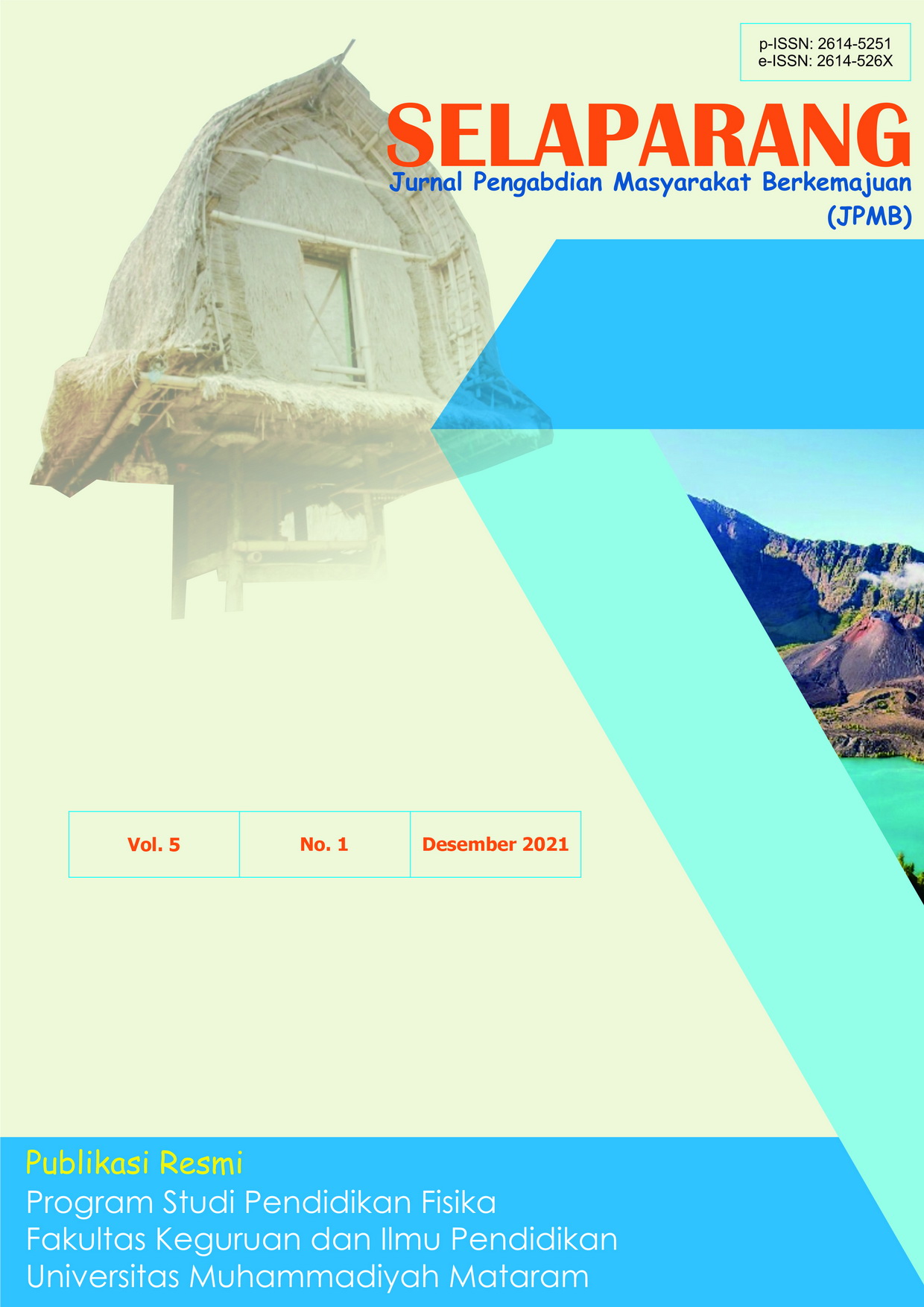PELATIHAN DAN MODELLING IMPLEMENTASI SEKOLAH RAMAH ANAK BAGI GURU- GURU SEKOLAH MENENGAH ATAS
DOI:
https://doi.org/10.31764/jpmb.v5i1.6760Keywords:
children's rights, child-friendly schools, student well-being.Abstract
ABSTRAK
Dalam dunia pendidikan, school bullying merupakan salah satu masalah sosial yang cukup memprihatinkan karena terjadi hampir disemua tingkat kelas dan diseluruh dunia. Banyak faktor internal maupun eksternal yang berkontribusi pada school bullying. Pemahaman atas hak-hak anak serta implementasinya dalam Sekolah Ramah Anak merupakan salah satu solusinya. Pengabdian masyarakat ini bertujuan untuk memberikan pelatihan dan modelling tentang Sekolah Ramah Anak. Diharapkan para peserta memiliki landasan konseptual yang komprehensif tentang Sekolah Ramah Anak dan dapat mengimplementasikannya di sekolah masing-masing. Pelatihan dan modelling dilaksanakan melalui aplikasi Zoom, Schoology dan Whatsapp. Setelah pelaksanaan pelatihan, para peserta memiliki pemahaman dasar konseptual yang lebih komprehensif tentang Konvensi Hak-Hak Anak dan implementasinya dalam Sekolah Ramah Anak. Sehingga, mereka mampu berimaji membuat rancangan program implementasi Sekolah Ramah Anak di sekolah masing-masing.
Â
Kata kunci: hak-hak anak; sekolah ramah anak; student well-being.
Â
ABSTRACT
In the education world, school bullying represents a social problem that needs excellent attention because it occurs in almost all grade levels across the globe. Many internal and external factors contribute to school bullying. Understanding children's rights and their implementation in Child-Friendly Schools is one of the solutions for the problem. This community service aims to provide training and modelling on Child-Friendly Schools. It is hoped that the participants gain a comprehensive conceptual foundation on Child-Friendly Schools and implement it in their institutions. Training and modelling are carried out through the Zoom, Schoology and Whatsapp applications. The result of the activity indicated that the participants had a more comprehensive conceptual, basic understanding of the Convention on the Rights of the Child and its implementation in Child-Friendly Schools. In addition, they could design programs to implement Child-Friendly Schools in their institution.
Â
Keywords: children's rights; child-friendly schools; student well-being.
References
Bandura, A. (1977). Social learning theory. Englewood Cliffs, NJ: Prentice-Hall
CRC Projects with Child Right Institute at Lund University. Retrieved from http://www.globalcrconline.org/archive
Jan, M. S. A. & Husain, S. (2015). Bullying in elementary schools: Its causes and effect on students. Journal of Education and Practice, 6(19), 43-56.
Hammarberg, T. (1998). A school for children with rights. UNICEF International Child Development Centre. Retrieved from https://www.peacepalacelibrary.nl/ebooks/files/357538447.pdf
Iskandar, U. (2015). Pengertian dan Standar Sekolah Sehat. Retrieved from :http://uray- iskandar.blogspot.co.id/2015/08/pengertian-dan-standar-sekolah- sehat.html?m=1
Kanyago, N. (2007). Realising rights for children. Retrieved from http://www.africanchildforum.org
Konu, A. I., Lintonen, T. P., & Autio, V. J. (2002). Evaluation of well-being in schools - A multilevel analysis of general subjective well-being. School Effectiveness and School Improvement, 13(2), 187–200.
Konvensi Hak Anak. (1898). Retrieved from http://www.pbhi.or.id/documents/regulasi/ KovensiHakAnak.pdf
Moeller, J., Brackett, M. A., Ivcevic, Z., & White, A. E. (2020). High school students' feelings: Discoveries from a large national survey and an experience sampling study. Learning and Instruction, 66, 1–15.
Na’imah, T., & Tanireja, T. (2017). Student Well-being pada Remaja Jawa. Psikohumaniora: Jurnal Penelitian Psikologi, 2(1), 1–11.
Nabavi, R. T. (2012). Bandura's social learning theory & social cognitive learning theory. Retrieved from file:///C:/Users/LENOVO/AppData/Local/Temp/BandurasTheory.pdf
Pollard, E. & Lee, P. (2003). Child well-being: a systematic review of the literature. Social Indicators Research, 61(1), 59-78.
Rosalin, L. N. (2015). Panduan sekolah ramah anak. Kementerian Peberdayaan Perempuan Dan Perlindungan Anak. Retrieved from https://sekolahramahanak.files.wordpress.com/2013/11/juknis-final-3-2-16-1.pdf
Soutter, A. K., O'Steen, B., & Gilmore, A. (2014). The student well-being model: a conceptual framework for the development of student well-being indicators. International Journal of Adolescence and Youth, 19(4), 496–520.
UNICEF. (2016) Child friendly Schools. Retrieved from http://www.unicef.org/lifeskills/ index_7260.html
Downloads
Published
Issue
Section
License
The copyright of the received article shall be assigned to the journal as the publisher of the journal. The intended copyright includes the right to publish the article in various forms (including reprints). The journal maintains the publishing rights to the published articles.

Selaparang : Jurnal Pengabdian Masyarakat Berkemajuan is licensed under a Creative Commons Attribution-ShareAlike 4.0 International License.

